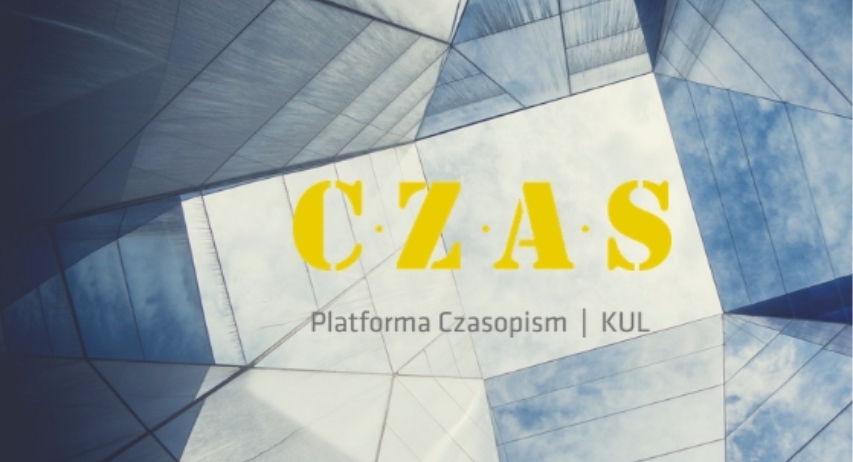The Literary and Cultural Potential of Patristic and Theological Texts. Selected Examples
Beata Gaj
Cardinal Stefan Wyszyński University in Warsaw , Polandhttps://orcid.org/0000-0001-9165-2124
Abstract
The article discusses the issue of literary and cultural reflection on patrological and theological texts. The outline of possible analysis of texts related to the history of doctrine and the dissemination of Christianity using methods other than those developed in patristics and theology shows ways to enrich both the spectrum of interpretation of texts originating from Christian antiquity or its reception, as well as the possibilities of disseminating knowledge about them. For exemplification, texts by three authors of Christian antiquity were selected: Damasus I, Firmicus Maternus, Filaster of Brescia, and native reception texts from Poland (Walenty of Warta, Andreas Stredonius), referring both to the achievements of ancient literature, Christian apologetics, and to the literary tendencies of the era (16th and 17th centuries).
Keywords:
Damasus I, Firmicus Maternus, Philaster of Brescia, Walenty from Warta, Andreas Stredonius, genology, generative anthropology, rhetoricReferences
Andreas Stredonius, Fama Posthuma Virtutis et Honoris Episcoporum Wratislaviensium, Virtuti et Honori Reverendissimi ac Celsissimi Principis Domini, Domini Sebastiani Dei et S. Sedis Apostolicae gratia Episcopi Vratislaviensis, Sacrae caesareae Regiaeque Hungariae ac Bohemiae Majestatis Consiliarii, & Supremi in utraque Silesia Capitaneatus Administratoris, cum Solenni ritu in Silesiae Antistitem consecraretur, Oblata A Caesareo Regioque Collegio Vratislaviensi Societatis Jesu, Vratislaviae 1665.
Ammianus Marcellinus, Res Gestae, tł. I. Lewandowski, Ammianus Marcellinus, Dzieje rzymskie, t. 1, Warszawa 2002.
Ferrua A., Epigrammata Damasiana, Roma 1942.
Epifaniusz z Salaminy. Panarion. Herezje 1‑33. Tekst grecki i polski, tł. M. Gilski, opr. A. Baron, Kraków 2015.
Filastrius Brixiensis, Diversarum hereseon liber, ed. F. Heylen, CCL 9, Turnhout 1957, s. 217‑324, tł. M. Szram, Filastriusz z Brescii (Filastrius Brixiensis), Księga różnych herezji, opr. M. Szram, ŹMT 87, Kraków 2021.
Pernot, Druga sofistyka, s. 29.
Heuten G., Julius Firmicus Maternus. De errore profanarum religionum. Traduction nouvelle avec texte et commentaire, Travaux de la Faculté de Philosophie et Lettres de l’Université Libre de Bruxelles 8, Bruxelles 1938, tł. B. Gaj, Iulius Firmucus Maternus, Jak nieświadomi błądzą w wierze, tł. B. Gaj, Warszawa 2014.
Julius Firmicus Maternus, Senator, Vom Irrtum der heidnischen Religionen, übertragen und arläutert, übertragen und erläutert von Konrat Ziegler, Max Hueber, München1953.
Damasus I, Damasus of Rome: The Epigraphic Poetry. Introduction, Texts, Translations, and Commentary, ed. D. Trout, Oxford Early Christian Texts, Oxford 2015.
Walenty z Warty, Promptuaria pauperis concionatoris in laudem et gloriam omnipotentis Dei Pro utilitate peregrinorum in Clarum montem frater Valentinus Wartensis (Rękopis w klocku I 9, Archiwum Jasnej Góry).
Phisiologos, tł. K. Jażdżewska, Fizjolog, Warszawa 2003.
Bednarz M., Damazy, w: Muza łacińska. Antologia poezji wczesnochrześcijańskiej i średniowiecznej, opr. M. Starowieyski, Wrocław 2007, s. 20‑22.
Braund S.M., Latin Literature, London – New York 2002.
Budzanowska-Weglenda D., Tykoniusz i jego reguły egzegezy biblijnej, Warszawa 2016.
Częsz B., Metodologia patrologii – patrystyki, „Studia Nauk Teologicznych PAN” 2 (2020) s. 63‑70. (Crossref)
Flower R., Rhetoric and Religious Identity in Late Antiquity, Oxford 2020. (Crossref)
Gaj B., Genethliakon. Pieśń ku czci życia, Warszawa 2018.
Gaj B., Nietolerancja, „error” czy „hallucinatio” – nowe odczytanie łacińskiego dyskursu religijnego z IV w., „Roczniki Humanistyczne” 66/3 (2018) s. 65‑78. (Crossref)
Gaj B., Styl łacińskich traktatów Firmikusa Maternusa i Filastra z Brescii (IV w. n.e.), „Stylistyka” 29 (2020) s. 411‑423. (Crossref)
Gaj B., Time of heresy. Hearesis – error – hallucinatio. The Book of Various Religious Opinions of Philaster of Brescia, Opole 2022.
Gaj B., Tradycje retoryczne na dawnym Śląsku (XVI-XVIII wiek), Katowice – Opole 2007.
Gans E., The Origin of Language, Berkeley 1981.
Generative Anthropology and Transdisciplinary Inquiry: Religion, Science, Language & Culture, red. B. Gaj – M. Złocka-Dąbrowska Warszawa 2018.
Groehl F., De syntaxi Firmiciana, Breslau 1918.
Ilski K., Kotłowska A., Nieetyczna kuropatwa. O niektórych źródłach Listu 40. Ambrożego z Mediolanu „Symbolae Philologorum Posnaniensium Graecae et Latinae” 33/1 (2023) s. 129‑137. (Crossref)
Komparatystyka dzisiaj, t. 1: Problemy teoretyczne; t. 2: Interpretacje, red. E. Szczęsna – E. Kasperski, Warszawa 2010‑2011.
Mandziuk J., Historia Kościoła katolickiego na Śląsku; czasy reformacji protestanckiej, reformy katolickiej i kontrreformacji 1520‑1742, t. 2, Warszawa 1995.
Myszor W., Między ortodoksją i herezją, w: https://teologiapolityczna.pl/ks-wincenty-myszor-miedzy-ortodoksja-i-herezja
Nowaszczuk J., Przyczynek do dziejów obrazowania – Iubilaeus symbolicus dla nuncjusza Fabiusza Chigiego, „Roczniki Humanistyczne” 71/3 (2023) s. 139‑156. (Crossref)
Pernot L., Druga sofistyka. Stan badań i nowe perspektywy, „Theologica Wratislaviensia” 1 (2006) s. 19‑31.
Rahn H., Morphologie der Antiken Literatur, Eine Einfürung, Wissenschaftliche Buchgesellschaft Darmstadt, Darmstadt 1969.
Reutter U., Damasus, Bischof von Rom (366‑384). Leben und Werk, Studien und Texte zu Antike und Christentum 55, Tübingen 2009. (Crossref)
Sadowski W., Litania i poezja. Na materiale literatury polskiej od XI do XXI wieku, Warszawa 2011. (Crossref)
Szlesiński I., Charakterystyka językowo-stylistyczna prozy kaznodziejskiej XVII wieku, Łódź 1978.
Sztuka interpretacji w ostatnim półwieczu, t. 3, red. H. Markiewicz – T. Walas, Kraków 2011.
The Cambridge History of Classical Literature, w: Latin Literature, t. 2, ed. E.J. Kenney – W.V. Clausen, Cambridge – New York – New Rochelle – Melbourne – Sydney 1982.
Tian X., From the Eastern Jin to the Early Tang (317‑649), w: The Cambridge History of Chinese Literature, t. 1, red. Kang-i Sun Chang – S. Owen, Cambridge 2010, s. 189‑285. (Crossref)
Żurek A., Synody wczesnochrześcijańskie, w: Synody Diecezji Tarnowskiej, t. 7, red. A. Żurek – J. Soprych, Kraków 2017, s. 31‑46. (Crossref)
Cardinal Stefan Wyszyński University in Warsaw https://orcid.org/0000-0001-9165-2124
License

This work is licensed under a Creative Commons Attribution-NoDerivatives 4.0 International License.
Papers published in Vox Patrum are covered by the Attribution-NoDerivatives 4.0 International (CC BY-ND 4.0) licence. Authors and users can use published works licensed under the CC-BY-ND since 2018. For earlier publications, copyrights are available under fair use rights in accordance with the Act of February 4, 1994 on copyrights and related rights.







